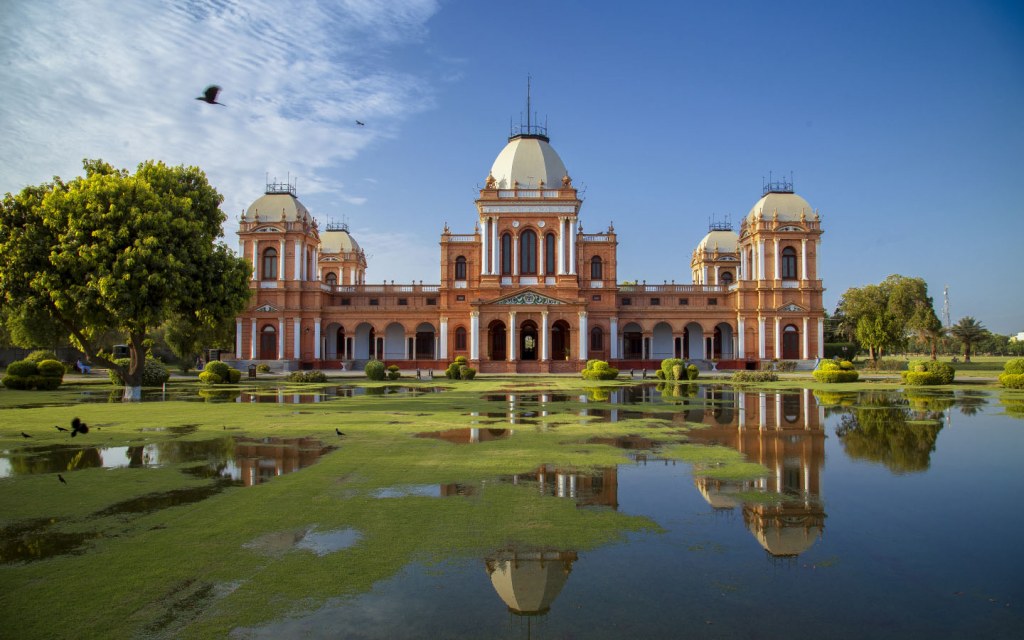Noor Mahal
History
Noor Mahal or Royal Palace in Bahawalpur is one of the most striking all things considered and socially rich structural exhibitions of Pakistan. Noor Mahal is the place where there is Bahawalpur was essential for the Hakra Civilization which is one of the most established on the planet, sharing the time of the Egyptian and Mesopotamian Civilizations. These human advancements were all around associated with using ocean and land courses.
Noor Mahal was established by Nawab Sadiq Mohammad Khan IV who devoted this castle to his dearest spouse. His better half, after seeing the burial ground contiguous the limit mass of the royal residence, would not remain for one more night after going through a solitary night there. So far as that is concerned, the castle stayed uninhabited and deserted all through the rule of Nawab Sadiq Mohammad Khan IV. Nawab Sadiq Mohammad Khan IV was properly commented as the Shah Jahan of Bahawalpur inferable from his consistently developing enthusiasm for setting up pivotal structures which conspicuously grandstand the loftier stylish taste of its organizer.
Architecture
Noor Mahal was worked by the fifth leader of Bahawalpur State Nawab Sir Muhammad Sadiq or the 'Shahjehan of Bahawalpur', who is prestigious for his enthusiasm for developing excellent structures. The development of this wonderful structure was done British Engineer named Heenan in 1875.
Noor Mahal was underlying the center of an open nursery having a water tank and wellsprings. It comprises 32 rooms, including a cellar. At the point when the development was finished, the castle was beautified with thick covers and compositions made by western specialists.
Noor Mahal covers a colossal area of 44,600 square feet. Out of a sum of 32 rooms, 14 are situated in the cellar locale. The absolute count of verandas and arches of the royal residence is 6 and 5 individually.
The two-story castle had dazzling furnishings and installations like light fixtures and pantries that were imported while it likewise comprised of a rich assortment of arms in its arsenal.
As a component of the Mughal customs, a few swords and guns are likewise in plain view inside the castle.
In 1906, a Mosque was added to the castle by Nawab Bahawal Khan, a later leader of the province of Bahawalpur.
This castle is monstrously wonderful with high, beautiful, and elegantly improved roofs with enormous ceiling fixtures, stylishly marbled, tiled floors, and open lobbies. A lofty work of design would draw in any set of experiences adoring voyager to it. The structure's veneer is very much supplemented by its similarly dazzling inside. The Corinthian and Islamic-styled engineering spread more than 4140 square meters. The dividers of Noor Mahal are celebrated with the representations of the numerous nawabs that capably managed the Bahawalpur state, with their critical accomplishments and other life data under their pictures.
In 1956, when Bahawalpur state formally converged into Pakistan after an agreement was endorsed by the Nawab, Sadiq-V, Noor Mahal's structure was taken over by the Auqaf division. The Nawab kept on keeping up with his title, the conventional convention, and got a yearly payment till his passing in 1966 in London.
The imaginative worth which was thought about while idealizing the outside of the royal residence was held during the inside plan of the castle. Planning material combined with installations was imported from Italy and England at a weighty expense. A castle, a Belgium-made mirror alongside a piano and other furniture is as yet worth a look. A red stone colonnade invited us into the anteroom. Here a piano and a photo of Nawab Sir Sadiq welcomed us.
Noor Mahal was, later, rented to Pakistan Army in 1971, and afterward, Pakistan Army bought it in 1997 for 119 million rupees. It was proclaimed a 'Secured Monument' by the Archeology Department of Pakistan in 2001. Pakistan Army required two years of leading helpful work on the structure and its design to carry it to its present structure. They later opened it for general guests and travelers. While Bahawalpur has various such castles, burial places, and verifiable structures in its area, Noor Mahal, with all its brilliance, is certainly not to be passed up.
Noor Mahal Bahawalpur is essential for the rich engineering legacy of Pakistan, and a commendable objective for tourists.

















0 Comments